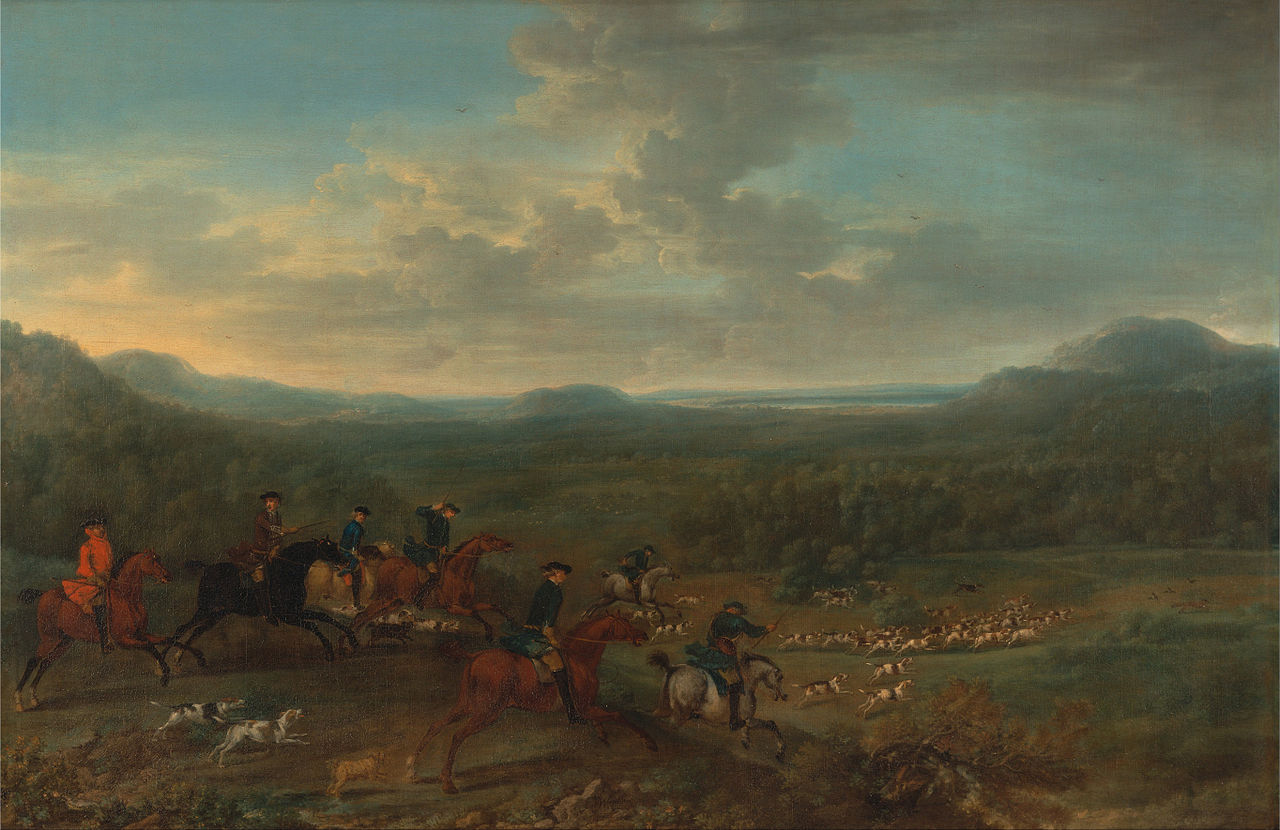George Lambert, Box Hill with Dorking in the Distance, 1733
Images: Wikimedia Commons
Yale University's British Art Studies is a completely open access journal and its Autumn issue is dedicated to 'Landscape Now'. In addition to various articles, including the Tim Barringer piece I referred to earlier this month, there is a 'Conversation Piece' coordinated by Alexandra Harris. She refers to the current popularity of books about nature, but suggests that 'while readers are offered new ideas about landscape writing at every festival (several festivals are devoted to the subject) and with every Amazon click and with each week’s Caught by the River newsletter, it can be harder to get much purchase on developments in contemporary visual arts and art history. Work by art historians is not always being brought to the common table...' Unsurprisingly (given what I wite about here), agree with this. She also gives an insight into what she has been researching recently (I have written about here before about her previous books on landscape and culture, Weatherland and Romantic Moderns).
I've been trying in my own research to get closer to an understanding of what places have looked like to different kinds of people living in them. I want to find evidence for what “views” have looked like to people, other than the makers and consumers of landscape art. It’s hard: I’ve been reading for two years—parish registers, local histories, antiquarian guides, court proceedings, wills and inventories, tithe maps, a very occasional diary; I’ve been wondering at the skill and sensitivity of local historians like Margaret Spufford and many who followed her lead—yet still I’m baffled by the difficulty of reaching the landscape feelings of the past. [...] Whether we are reaching back to life before (or without access to) the grammars of Western landscape painting, or looking again at Lambert, Wootton, and Wilson, or thinking about contemporary artists, it may be fruitful to reunite landscape with local knowledge and local people, from the airy prospects to make out local habitations and names.
John Wootton, A Fox Hunt, c. 1735
Several responses follow Alexandra Harris's introduction, some more informative than others. Rachel Hewitt for example, tells us that at present 'there is important work being done, by Hayley Flynn among others, on [William] Blake’s interactions with, and subversions of, the eighteenth-century British landscape tradition' (I wonder if this new scholarship will surface in the Tate's Blake exhibition, scheduled for autumn next year). Emily Hayes writes about the influence of the Royal Geographical Society's magic lantern lectures, including those by Vaughan Cornish, a 'chemist turned geographer' who specialised in the study of waves, before turning later 'towards eugenics and landscape heritage activism'. The intention is that this Conversation 'will develop as more respondents enter the debate. Readers can also join in by adding a response at the bottom of the page.' There are no responses yet - I hope there will be, but I've learnt here that in the age of Twitter you can't really expect people to go to the trouble of adding written comments.
Vaughan Cornish, Breaker and Bores on a Flat Shore, 1910
I will conclude here by pointing you to three other articles in the journal, each about landscape artists I have discussed here before.
- Anna Reid's piece, 'Paul Nash's Geological Enigma', reviews the artist's interest in contemporary geophysical research;
- Greg Smith takes a fresh look at Thomas Girtin's panorama, The Eidometropolis, drawing on material that has become available only in recent years;
- And in 'Liquid Landscapes', Stephen Daniels juxtaposes a series of pond photographs by Jem Southam with Constable's depiction of Branch Hill Pond in his pictures of Hampstead Heath.
John Constable, Hampstead Heath, with Pond and Bathers, 1821



.jpg/1116px-John_Constable_-_Hampstead_Heath%2C_with_Pond_and_Bathers_(1821).jpg)
1 comment:
Merry christmas and happy new year!
Many thanks for posting about the very interesting British art studies, I never heard about it before.
cheers
Martin
Post a Comment